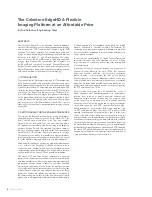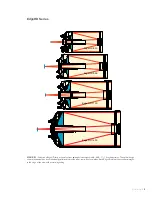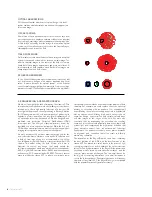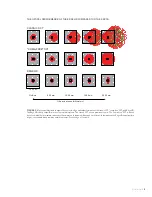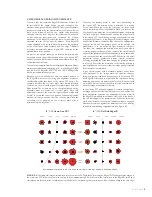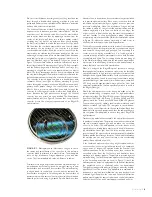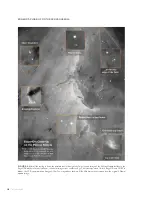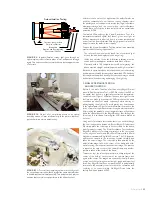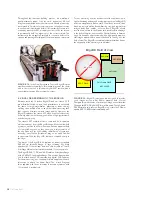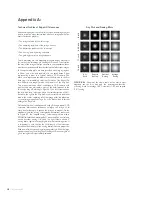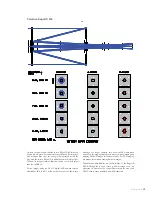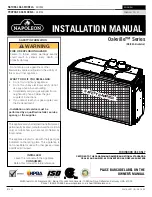
2
I
The Celestron EdgeHD
The Celestron EdgeHD A Flexible
Imaging Platform at an Affordable Price
By the Celestron Engineering Team
ABSTRACT:
The Celestron EdgeHD is an advanced, flat-field, aplanatic
series of telescopes designed for visual observation and imaging
with astronomical CCD cameras and full-frame digital SLR
cameras. This paper describes the development goals and
design decisions behind EdgeHD technology and their practical
realization in 8-, 9.25-, 11-, and 14-inch apertures. We include
cross-sections of the EdgeHD series, a table with visual and
imaging specifications, and comparative spot diagrams for
the EdgeHD and competing “coma-free” Schmidt-Cassegrain
designs. We also outline the construction and testing process for
EdgeHD telescopes and provide instructions for placing sensors
at the optimum back-focus distance for astroimaging.
1. INTRODUCTION
The classic Schmidt-Cassegrain telescope (SCT) manufactured
by Celestron served an entire generation of observers and astro-
photographers. With the advent of wide-field and ultra-wide-field
eyepieces, large format CCD cameras, and full frame digital SLR
cameras, the inherent drawbacks of the classic SCT called for a
new design. The EdgeHD is that new design. The EdgeHD of-
fers clean, diffraction-limited images for high power observation
of the planets and the Moon. As an aplanatic, flat-field astro-
graph, the EdgeHD’s optics provide tight, round, edge-to-edge
star images over a wide, 42mm diameter flat field of view for
stunning color, monochrome, and narrow-band imaging of deep
sky objects.
2. SETTING GOALS FOR THE EDGEHD TELESCOPE
The story of the EdgeHD began with our setting performance
goals, quality goals, and price goals. Like the classic SCT, the
new Celestron optic would need to be light and compact.
Optically, we set twin goals. First, the new telescope had to
be capable of extraordinary wide-field viewing with advanced
eyepiece designs. Second, the optic had to produce sharp-to-
the-edge astrophotography with both digital SLR cameras and
astronomical CCD cameras. Finally, we wanted to leverage
Celestron’s proven ability to manufacture high-performance
telescopes at a consumer-friendly price point. In short, we sought
to create a flexible imaging platform at a very affordable price.
Given an unlimited budget, engineering high-performance optics
is not difficult. The challenge Celestron accepted was to
control the price, complexity, and cost of manufacture without
compromising optical performance. We began with a compre-
hensive review of the classic SCT and possible alternatives.
Our classic SCT has three optical components: a spherical
primary mirror, a spherical secondary mirror, and a corrector plate
with a polynomial curve. As every amateur telescope maker and
professional optician knows, a sphere is the most desirable
optical figure. In polishing a lens or mirror, the work piece moves
over a lap made of optical pitch that slowly conforms to the glass
surface. Geometrically, the only surfaces that can slide freely
against one another are spheres. Any spot that is low relative to
the common spherical surface receives no wear; any spot that is
higher is worn off. Spherical surfaces result almost automatically.
A skilled optician in a well-equipped optical shop can reliably
produce near-perfect spherical surfaces. Furthermore, by
comparing an optical surface against a matchplate—a precision
reference surface—departures in both the radius and sphericity
can be quickly assessed.
In forty years of manufacturing its classic Schmidt-Cassegrain
telescope, Celestron had fully mastered the art of making
large numbers of essentially perfect spherical primary and
secondary mirrors.
In addition, Celestron’s strengths included the production of
Schmidt corrector plates. In the early 1970s, Tom Johnson,
Celestron’s founder, perfected the necessary techniques.
Before Johnson, corrector plates like that on the 48-inch
Schmidt camera on Palomar Mountain required many long
hours of skilled work by master opticians. Johnson’s innovative
production methods made possible the volume production of a
complex and formerly expensive optical component, triggering
the SCT revolution of the 1970s.
For more than forty years, the SCT satisfied the needs of
visual observers and astrophotographers. Its performance
resulted from a blend of smooth spherical surfaces and
Johnson’s unique method of producing the complex curve
on the corrector with the same ease as producing spherical
surfaces. As the 21st century began, two emerging technologies
—wide-field eyepieces and CCD cameras—demanded high-
quality images over a much wider field of view than the clas-
sic SCT could provide. Why? The classic SCT is well-corrected
optically for aberrations on the optical axis, that is, in the exact
center of the field of view. Away from the optical axis, however,
its images suffer from two aberrations: coma and field curvature.
Coma causes off-axis star images to flare outward; field curvature
causes images to become progressively out of focus away from
the optical axis. As wide-field eyepieces grew in popularity, and
as observers equipped themselves with advanced CCD cameras,
the classic SCT proved inadequate. To meet the requirements of
observers, we wanted the new Celestron optic to be both free of
coma and to have virtually zero field curvature.


